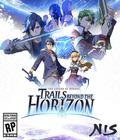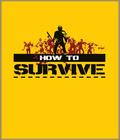Every once in a while, a game comes along that comes really close to doing just about everything right. How to Survive treads pretty familiar ground in its premise of playing as a survivor in a zombie apocalypse, but it does so in such a way that feels fresh. The game is played from a top-down perspective, and you must use your wits to cobble together the necessities for survival. You must slay any undead as you try to find a way off the island.
How to Survive takes place immediately after a shipwreck that lands you on a beach with little more than the clothes on your back. Scavenging for supplies and materials is arguably the most important element, and it allows for you to better equip yourself. When you start off, you have little more than a stick to use as a weapon, but if you combine it with a bit of flint, you have a basic ax. Likewise, combining a flexible branch with a reel of thread generates a crude bow. You could then whittle sticks with the ax and add feathers from seagulls to make arrows.
The crafting system relies largely on experimentation, but it doesn't feel too daunting. If you go into your inventory, compatible items light up to indicate that a new item will be created. Many combined items can be disassembled without a penalty, so you can take the components of a weapon that you no longer use to build a new, better one. As you play through the game, you will find parts to improve existing weapons, such as a balancing fork for a bow, and you can craft armor to reduce the damage you take.
This is for the best, since most things on the islands want to kill you, including basic zombies, wild animals — and occasionally zombified animals. The game has an accelerated day/night cycle, and at night, it is more difficult to see and many zombies move faster. New, smaller zombies also come out at night because they're afraid of light. Regardless of the time of day, you will encounter powerful undead, such as ones that violently explode when they take damage, ones that are wearing bulletproof vests or helmets, and others with special abilities.
You have two options to dispose of the threat: shoot them from afar or engage in melee combat. Melee does high damage but exposes you to getting hit by multiple targets. You can charge your melee hits before swinging to guarantee a critical hit, and usually, if the hit doesn't drop the enemy, it staggers them enough to let you pull off an execution move. Ranged combat has less damage potential but keeps you out of harm's way, at the expense of using ammo. Arrows can be recovered from dead enemies, though, and ammo is a generic item used for all guns.
If you are somewhat accurate with your shots, you shouldn't need to worry about running out of ammo mid-fight. Even if you do, you can simply switch to a melee weapon. Aiming is an interesting mechanic, as you move the mouse away from your survivor to aim in the desired direction. If an enemy is there, a circle appears to represent your accuracy. The smaller the circle, the more likely the shot is to hit the enemy, and if it shrinks all the way, it becomes a crosshair to signify a guaranteed shot. It can get chaotic when you're trying to aim at a particular zombie in an oncoming horde, but overall, the system works really well and is a lot of fun.
The undead are not the only threat to your well-being, as you must also worry about your health, hunger, sleep and thirst levels. As you take damage from the undead, your health decreases. If you lose it all, you die. Health is most easily replenished by the rare med kits, but it can also be replenished by making herbal poultices or bandages from cloth scraps. Hunger can be replenished by eating wild plants or cooked meat from hunted game, and it usually replenishes some health. Thirst can be refilled by drinking from a well or using the well to fill up empty bottles.
Sleep requires more specific actions to replenish, and it involves seeking out one of the safe shacks that dot the island. The first time you find one and open the door, an alarm sounds, forcing you to fight off a sizable horde of foes from all directions. Once the building has been secured, the alarm won't go off again for that location, and you have a safe place to sleep. Sleeping also restores health and helps pass time more quickly, but you can only sleep if your need to do so is high enough.
These are important attributes because if you let them decrease to zero, they'll have a detrimental effect on your health. Before it gets to zero, a low need bar adversely affects your character's stamina and reduces your ability to sprint and dodge. A tired, hungry survivor can hardly outrun enemies, so it's wise to keep your needs in check at all times, or it could get you killed. With a little prep work, it can be easy to keep a stock of food and water in your inventory, so it's not as if you're constantly scavenging to get by.
You'll have a hard time trying to make everything fit in your pack, though. Inventory space comes at a premium in the game, especially if you pick up every little thing. There aren't options to stash items elsewhere, though dropped items seem to stick around in the game world for a long time. You'll often need to make judgment calls about how many items (and item types) you are carrying, and you'll need to drop some in favor of others that are more worthwhile.
A mysterious figure named Kovac is the resident survivalist of the islands. He checks in with you from time to time and walks you through some game basics. It is more likely that you will find chapters of his "How to Survive" guide scattered around the islands. Picking up each chapter invokes an animated cut scene with a humorous representation of how to deal with a particular game mechanic, such as hunger or how to build weapons. They're entertaining but also provide worthwhile information about how to survive the game. Pages can also be found that add crafting recipes to your book, so you can refer to them when you're trying to build something.
How to Survive supports local cooperative play only, but remote play is slated to be added in a patch later this year. The game features challenges that can be played either locally or remotely, but they're obviously smaller bits of content to test your skill instead of being a relatively long story mode. Otherwise, the multiplayer component is rather bare-bones, though the title is a lot of fun to play cooperatively. Some of the undead hordes are easier to tackle with an extra blade or gun at your side.
There are no areas where How to Survive really stumbles, and there are plenty of areas where it shines. The combat flows well, though ranged seems to be a better idea than melee, and the enemy variety keeps things from becoming stale. This is also helped by other gameplay elements, such as the day/night cycle and the survival aspect. More importantly, the game is fun to play as you cobble together better gear to face down larger numbers and stranger varieties of enemies. It's as if no one told the development team that the title was only going to cost $15. How to Survive manages to outshine many full-priced games.
Score: 9.1/10
More articles about How to Survive











 Featuring a robust crafting system, unique survival guide and a host of playable characters, How to Survive strands players on a remote archipelago off the coast of Colombia in the aftermath of an unexplained accident … but you’re not alone.
Featuring a robust crafting system, unique survival guide and a host of playable characters, How to Survive strands players on a remote archipelago off the coast of Colombia in the aftermath of an unexplained accident … but you’re not alone.



































